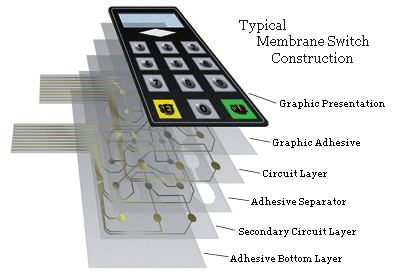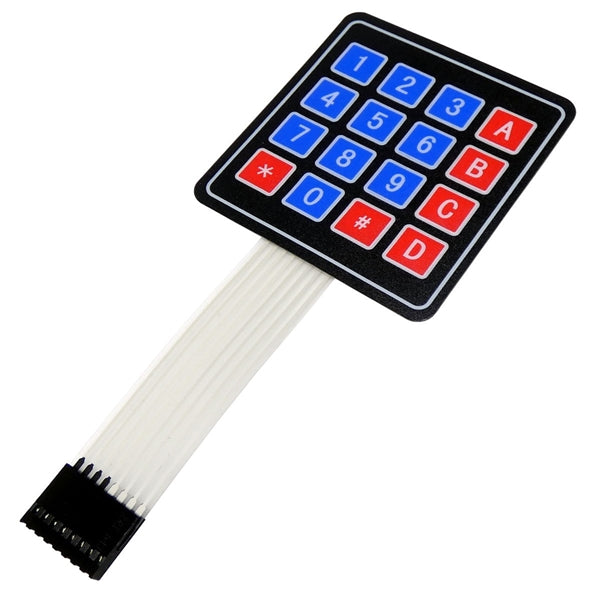It’s important to assess the capabilities of any membrane switch manufacturer before placing an order.
It’s important to assess the capabilities of any membrane switch manufacturer before placing an order.
Blog Article
All Concerning Membrane Layer Change: Understanding Its Style and Capability
When you think regarding the control interfaces in modern devices, membrane buttons commonly enter your mind. These components are more than just switches; they mix style and capability perfectly. Comprehending just how they function and what makes them reliable can alter your point of view on day-to-day electronic devices. There are subtleties to their layout and performance that you could not be aware of. Let's explore what collections membrane layer switches over in addition to various other control systems.
What Are Membrane Switches?

Membrane buttons can additionally be tailored pertaining to form, dimension, and graphics, allowing manufacturers to create unique user interfaces customized to specific products. Overall, membrane switches play a substantial role in enhancing customer experience throughout a broad array of applications.
Just How Membrane Changes Job
When you press a key on a membrane layer switch, it turns on a straightforward yet efficient mechanism. The leading layer, commonly made of flexible material, lowers onto a conductive layer underneath it. This action bridges the void in between conductive traces, completing an electrical circuit. As quickly as the circuit closes, it sends a signal to the gadget's controller, which analyzes your input.
You'll observe that the responsive feedback differs based on the button style, supplying either a soft click or a much more noticable response. As soon as you launch the trick, the membrane layer go back to its initial placement, reopening the circuit and stopping the signal. This procedure occurs almost immediately, guaranteeing a receptive customer experience.
Membrane switches are preferred due to their toughness and resistance to dust and dampness, making them perfect for different applications, from home appliances to clinical devices. Understanding this procedure helps you value their extensive use.
Secret Elements of Membrane Buttons
Comprehending the crucial parts of membrane switches is essential for comprehending their capability and design. At the core, you'll discover the visuals overlay, which supplies the aesthetic interface for individuals. Under that, there's a spacer layer that separates the circuit layers, making certain that they do not make contact up until pressed. The circuit layer is where the magic takes place; it includes conductive traces that finish the circuit when you press the switch. Another necessary component is the sticky backing, permitting the switch to adhere to surfaces firmly. The safety layer guards versus environmental elements and wear, prolonging the switch's lifespan. Each part plays a substantial duty in making sure trustworthy efficiency and customer interaction. By understanding these parts, you'll get understanding right into just how membrane switches run and their value in different applications.
Products Utilized in Membrane Switch Over Style
The efficiency and longevity of membrane layer changes greatly depend on the products utilized in their style. You usually come across polyester and polycarbonate as main substrates because of their excellent strength and flexibility. These products stand up to scratches and chemicals, making them suitable for demanding settings.
The conductive layers usually use silver or carbon, picked for their dependability and conductivity. membrane switch manufacturer. Silver offers premium efficiency, while carbon these details is a cost-efficient choice. For the overlay, you could think about a matte or shiny coating, depending upon your visual needs and user experience
Adhesives play an essential duty also; they bond layers securely and guarantee durability. Ensure to choose adhesives that endure environmental elements like temperature level and humidity. Ultimately, do not forget the importance of an excellent printing technique for graphics, as it enhances both functionality and visual allure. Selecting the right his response materials will certainly guarantee your membrane button stands the examination of time.
Style Factors To Consider for Membrane Buttons
While designing membrane buttons, it's crucial to consider different elements that affect their capability and user experience. Beginning by concentrating on the layout and switch size; ensure they're intuitive and very easy to navigate. Consider the tactile comments you want to give-- will customers need a visible click or a softer touch? Additionally, consider the products you'll use, as they'll impact longevity and appearances.
Do not ignore the graphic style; clear labeling and shade comparison are significant for visibility. Validate your style accommodates ecological aspects, like dampness or temperature variations, which might influence performance. Lastly, bear in mind the relevance of screening prototypes with actual individuals to gather comments and make essential adjustments. This iterative procedure assists you fine-tune the layout, verifying it fulfills both functional and visual requirements effectively. By very carefully thinking about these aspects, you'll create a membrane layer switch that improves use and complete satisfaction.
Applications of Membrane Layer Switches
Membrane switches are functional components found in various applications, from commercial devices to customer electronic devices. You'll see their influence in makers that call for resilient user interfaces and in tools that take advantage of streamlined designs. Recognizing these applications aids you value the capability and practicality of his explanation membrane layer switches in everyday innovation.
Industrial Devices Usage
When you're looking to enhance the capability of industrial equipment, membrane layer buttons offer a reputable option that incorporates durability with easy to use layout. These buttons are ideal for extreme atmospheres, giving resistance to dust, moisture, and chemicals. Welcome membrane buttons to streamline your procedures and boost total efficiency.
Consumer Electronic Devices Integration
In the domain name of consumer electronic devices, membrane switches play an essential duty in boosting customer interaction and device functionality. You'll find them in devices like microwaves, remote controls, and video gaming consoles, giving a smooth method to interact with technology. Their smooth design enables easy assimilation right into numerous products, making controls instinctive and straightforward. With their ability to incorporate graphics and backlighting, you can enjoy a modern visual that complements the device's general look. Membrane switches additionally assure toughness and resistance to dirt and dampness, extending the life-span of your electronics. By selecting membrane layer switches, you improve not just the functionality however additionally the design of your tools, making day-to-day communications smooth and delightful.
Benefits and Drawbacks of Membrane Layer Buttons
While membrane layer buttons provide a series of advantages, they also come with some disadvantages that you ought to consider. One considerable benefit is their compact style, making them suitable for space-constrained applications. They're also cost-efficient, offering a resilient option with a low manufacturing expense. Furthermore, their seamless surface is easy to clean, boosting health in atmospheres like medical facilities.

Nonetheless, there are drawbacks. Membrane switches can have a much shorter life expectancy contrasted to mechanical switches, especially under hefty use. They can likewise be less tactile, which might affect individual feedback during operation. If harmed, repairing them can be challenging and typically requires complete replacement. Ultimately, their sensitivity to severe temperature levels and ecological conditions might restrict their efficiency in certain settings. Stabilizing these benefits and drawbacks will aid you establish if membrane buttons are the best suitable for your project.
Often Asked Inquiries
How Lengthy Do Membrane Layer Switches Over Typically Last?
Membrane layer switches over commonly last between 5 to 10 years, depending on usage and ecological problems. You'll intend to assess variables like wear, direct exposure to dampness, and temperature level variations to determine their durability effectively.
Can Membrane Switches Be Personalized for Certain Designs?
Yes, you can tailor membrane switches to fit specific layouts (membrane switch manufacturer). You'll have the flexibility to select shades, shapes, and designs that match your project's demands, ensuring they blend seamlessly with your general aesthetic
What Is the Price Variety for Membrane Layer Switch Production?
The cost variety for membrane button production typically drops between $1 and $10 per system, depending on factors like style intricacy, amount, and materials. You can get quotes from producers to discover the best alternative.

Are Membrane Switches Waterproof or Resistant?
Membrane layer buttons can be designed to be water resistant or immune, depending upon materials utilized and building techniques. If you need them for wet environments, guarantee you specify those requirements during the style process.
How Do Membrane Changes Contrast to Traditional Switches?
Membrane layer buttons are normally thinner and much more adaptable than standard buttons, providing a streamlined layout. They're typically simpler to cleanse and integrate, but might not supply the tactile comments you're used to with mechanical choices.
Final thought

Report this page